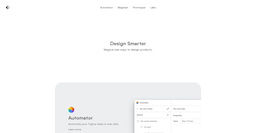User's Area

Diagram
Design smarter with magical new products.
What is Diagram?
Designing Intelligently: Innovative Approaches to Product Design
The concept of designing smarter involves implementing advanced and intuitive techniques in the product design process. This approach involves the utilization of innovative technologies and imaginative strategies to create products that are user-centric and highly effective. By considering the needs and preferences of end-users, designers can enhance the functionality and appeal of their products in ways that were previously unimaginable.
Embracing Innovation in Product Design
With the advent of new technologies and methodologies, the field of product design has seen substantial advancements. Designers are now able to leverage the power of artificial intelligence, virtual reality, and augmented reality to gain deeper insights into consumer behavior and preferences. These tools provide designers with the ability to create products that resonate with the target audience on a more profound level, resulting in enhanced user experiences and increased satisfaction.
User-Centric Design Principles
One of the fundamental aspects of designing smarter is the emphasis on user-centric design principles. By placing the needs and desires of users at the forefront of the design process, designers can ensure that the products they create not only meet basic usability standards but also delight and inspire users. By integrating user feedback and conducting thorough user research, designers can gain essential insights that inform their design decisions and drive the creation of products that truly resonate with their intended audience.
Harnessing the Power of Data and Analytics
Data-driven design has become an integral part of the product design process. By harnessing the power of data and analytics, designers can gain valuable insights into user behavior, market trends, and consumer preferences. This information enables designers to make informed decisions and refine their design strategies to align more closely with the needs of their target audience. By leveraging the wealth of data available, designers can create products that are not only visually stunning but also functionally superior.
The Evolution of Design Thinking
Innovative approaches to product design have also led to the evolution of design thinking. Designers are now encouraged to think critically and creatively about the challenges they face, leveraging a human-centered approach to problem-solving. This shift in mindset has resulted in the development of products that address complex user needs while also maintaining a focus on simplicity and elegance in design.
Conclusion
In conclusion, designing smarter involves embracing innovative technologies, adopting user-centric design principles, leveraging data and analytics, and evolving design thinking. By incorporating these elements into the product design process, designers can create products that not only meet the needs of their target audience but also inspire and delight users. The future of product design lies in the hands of those who are willing to think outside the box and embrace the ever-changing landscape of design.